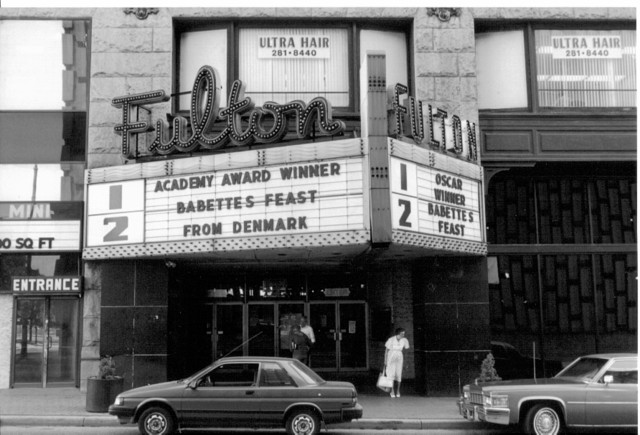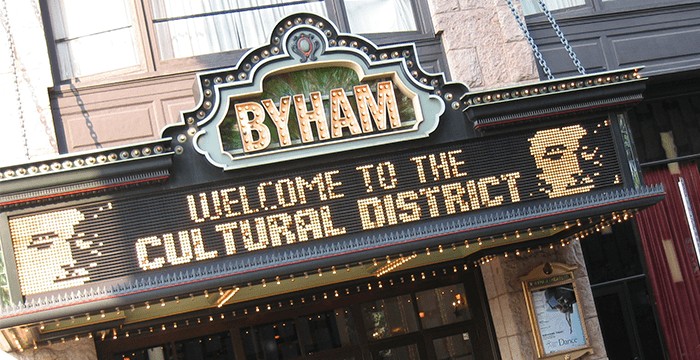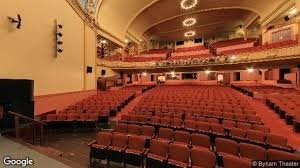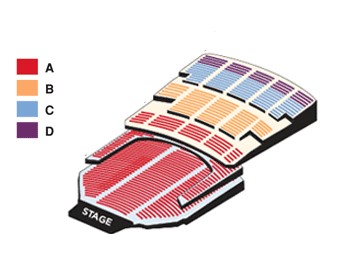Byham Theater
Introduction
Text-to-speech Audio
Images
This Black and white photo was taken during the time that the theater was named the Fulton Theater.

This is the current marquee of the Byham Theater.

Byam Theaters stage view of the theater's seating.

Seating chart of the Byham Theater now.

Backstory and Context
Text-to-speech Audio
Construction of the Gayety Theater began in 1903 and the theater held its grand opening on Halloween night in 1904. For the first 25 years, the Gayety was one of Pennsylvania's most popular theaters and its stage hosted Vaudeville performances and other touring shows. Between the mid-1890s to the early 1930s, Vaudeville houses were very popular and offered various forms of entertainment with a mixture of comedians, magicians, musicians, acrobats, and dancers. Each individual performance usually lasted for about five to ten minutes during which other performers would change into costumes for their next act. A precursor to the variety shows of the World War II era, vaudeville was known for stars such as Ethel Barymore, Gertrude Lawrence, and Helen Hayes, who each performed here when they came to Pittsburgh.
The Gayety was one of the leading theaters in the region and was constructed at a cost of about $130,000. Local citizens spoke with pride about the ornate design of the theater which included stained glass windows, copper cherubs and other statues, imitation gold leaf, and Italian marble covering the plaster columns. Today, the entrance hall includes some of the building's original mosaic tile and fixtures that date back to the earliest years of indoor electric lighting.
By the 1930s, the theater was renamed the Fulton and primarily served as a movie theater. This change was common throughout the United States and reflected the rising popularity of movies that supplanted the more expensive touring stage shows. The theater continued to thrive in the post World War II era, but by the 1960s more residents of the city were attending theaters that were built in residential areas. In 1968, the soon-to-be-classic thriller Night of the Living Dead was filmed in Pittsburgh and held its world premiere at the Fulton. The celebration of the premiere was soon met with increased competition from multi-plexes and the decline of the Fulton.
In 1990, the Pittsburgh Cultural Trust purchased the theater and began the first of four planned phases of renovation. In 1991, The Fulton was reopened and was unique in the use of the original hemp ropes and sandbags to work the scenery rigging technique until 1999, when the new modern rigging system was installed. In 1995 the Fulton was renamed the Byham Theater in recognition of a gift from William C. and Carolyn M. Byham. The Byham's gift funded the second phase of renovations which included new restrooms, marquee, box office, an elevator, lobby enhancements, and repairs to the building's exterior. The old Fulton marquee was preserved and is now on display at the State Museum of Pennsylvania in Harrisburg.
In 1997, the lobby was restored to its original historic appearance complete with cherubs and other furnishings. In 1999, the third phase of renovations took place, which updated the theater rigging system, enlarged the orchestra pit, and allowed for a new heating ventilation and air conditioning system for the entire building. Today, the Byham Theater is home to performances that include concerts, theater, film, dance, and many other events that are held throughout the year. The building is maintained by the Pittsburgh Cultural Trust which plans to further restoration efforts while also making improvements in terms of technology and accessibility.
Sources
Byham Theater History. Pittsburgh Cultural Trust. . Accessed January 20, 2019. https://trustarts.org/pct_home/visit/facilities/byham/history.
Bradbury, Shelly. "First-time use of metal detectors briefly delays Byham show." Post-Gazette(Pittsburgh)October 13, 2018. .
Byham Theater. Pittsburgh Cultural Trust. . Accessed January 25, 2019. https://trustarts.org/pct_home/visit/facilities/byham.
DeFerrari, John. Lost Washington: The Gayety Theater. Greater Greater Washington. January 26, 2011. Accessed February 15, 2019. https://ggwash.org/view/8040/lost-washington-the-gayety-theater.
